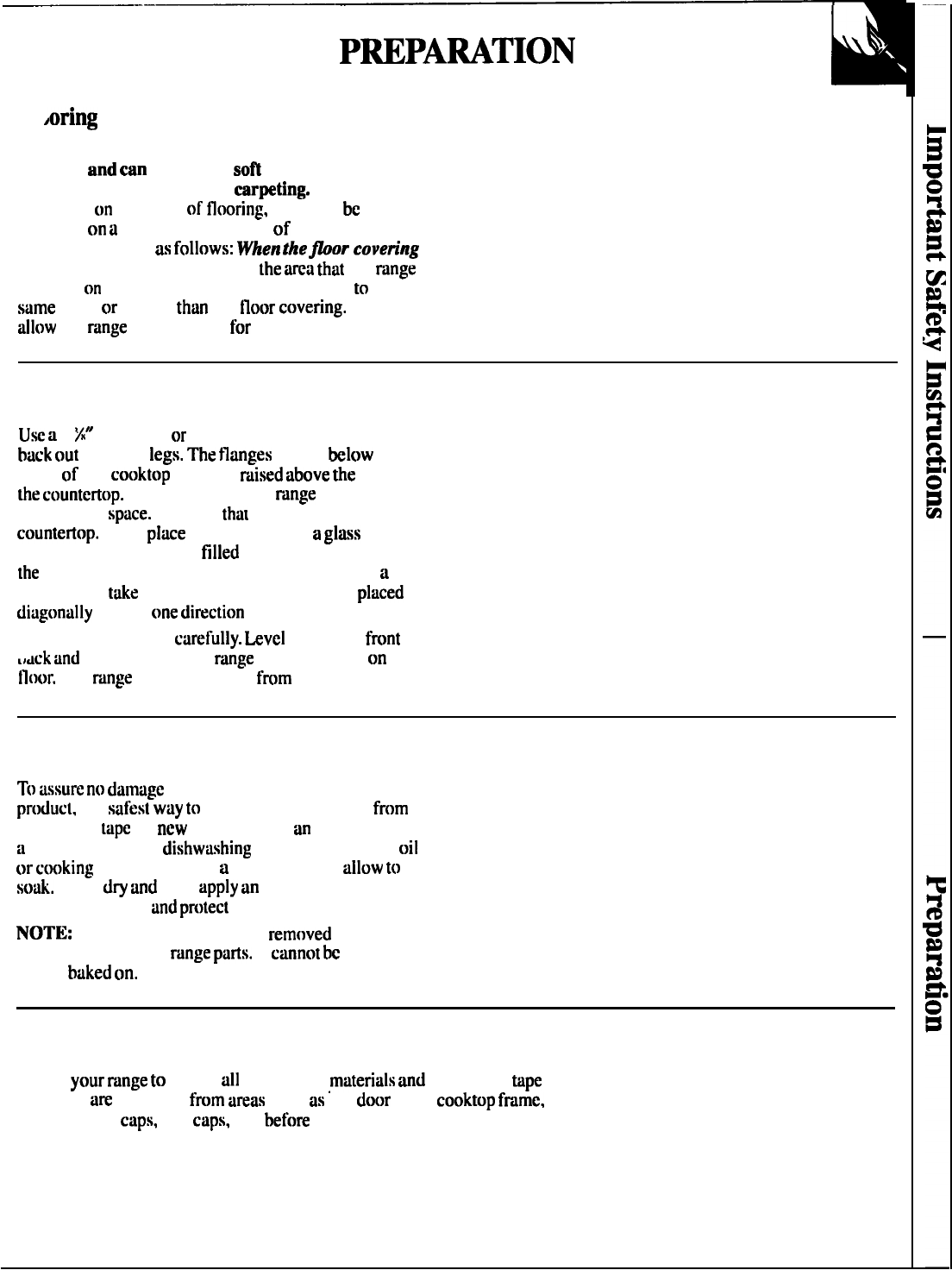
PMPAMTION
~oring
Under the Range
Your range, like so many other household items,
is heavy
and
can
settle into
sofi
floor coverings
such as cushioned vinyl or
car~ting.
When moving
the range
on
this type
of
Il(]oring,
it should
bc
installed
on
a
l/4-inch-thick sheet of plywood (or
similar material)
as
follows:
When
thefior
coven.ng
ends at the front of the range,
the
area
that
the
range
will rest
on
should be built up with plywood
to
the
sume
level
f)r
higher
than
the
floor
covering.
This will
allow
the
range
to be moved
for
cleaning or servicing.
Leveling the Range
Usc
a
1
X“
open-end
or
adjustable wrench to equally
back
(Jut
the four
legs.
The
tlanges
(rims)
belf)w
the
sides
of
the
c{)oktop
must be
raised
above
the
top of
the
countertop.
Carefully slide the
r~nge
into its
installation
space.
Observe
tha~
it is clearing the
countertop.
Then
place
a spirit level or
a
glass
measuring cup partially
filled
with water on one of
the
oven shelves to check for levelness. If using
a
spirit level,
take
two readings. with the level
placed
diagonally
first in
one
direction
and then the other.
just the four legs
curefully.
Uvcl
the range
f~)nt
to
,,~ck
and
side to side. The
range
legs must rest
on
the
Iloor.
The
range
must not hang
f~)m
the countertop.
How
to Remove Packaging Tape
T()
assure
no
damage
is done to the finish of the
pruduct.
the
safest
way
to
remove adhesive left
from
packaging
tape
on
new
appliances is
an
application of
;l
household liquid
dishwashing
detergent. mineral
uil
or
c(x)king
oil. Apply with
a
soft cloth and
allow
to
soak.
Wipe
dry
and
then
apply
an
appliance polish to
thoroughly clean
and
protect
the surface.
NOTE:
The plastic tape must be
removed
from
the chrome trim on
range
parts.
It
cannot
bc
removed
if it is
baked
(In.
Removing Packing Materials
Check
yf)ur
range
to
insure
all
packaging
,materials
and
protective
tape
covering
are
removed
frurn
areas
such
as
the
dour
trim,
cooktop
frame,
under burner
caps,
end
caps,
etc.
before
using.
7
—.


















